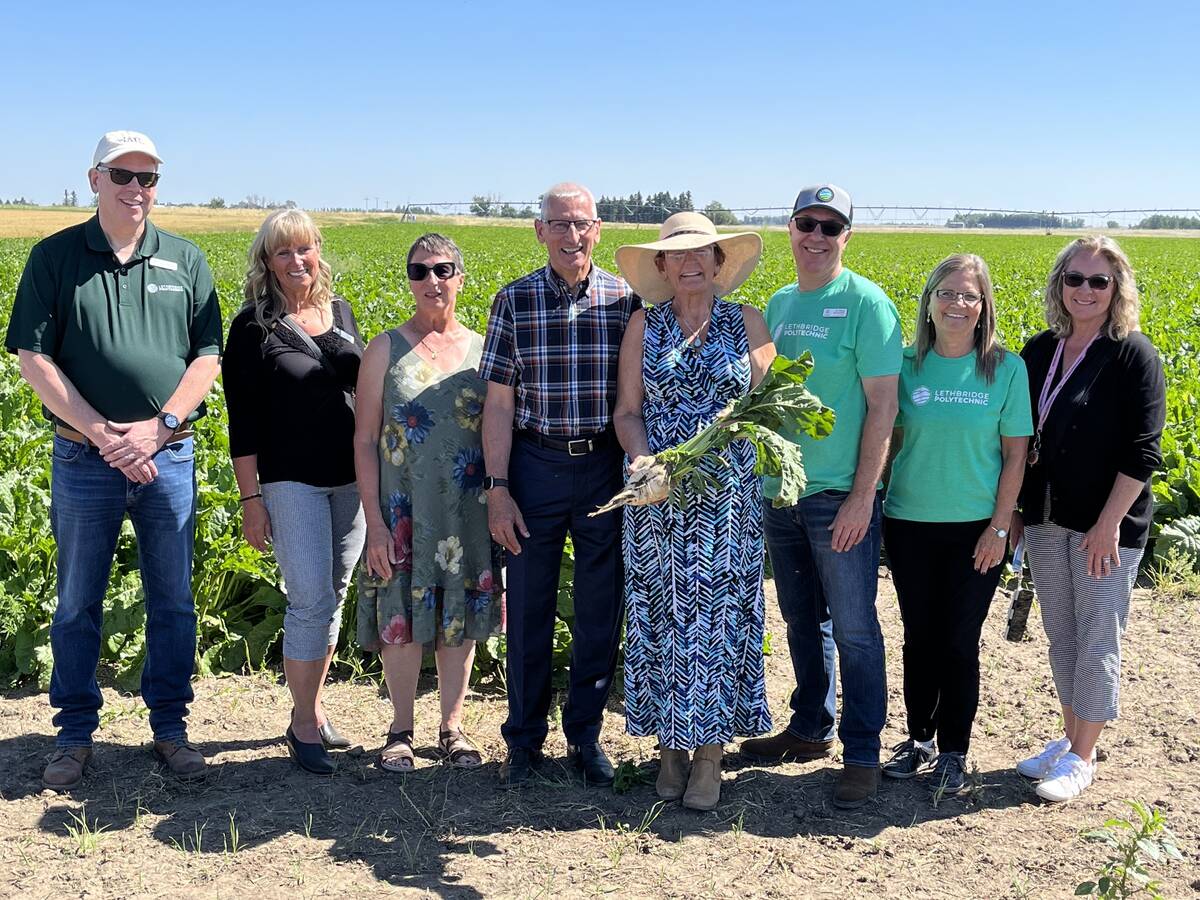When a blizzard storms into your community and dumps a whole winter’s worth of snow, you have to improvise, says Pat Ilotte.
The Melita, Man. veterinarian took her own advice as she talked a cattle producer through a tricky twin birth in the midst of the worst snowstorm to hit the area in decades.
“It’s a case of when you can’t get to a cow and the cow can’t get to you, you have to improvise a little bit,” said Ilotte.
“He had to figure out which feet belonged to which head. It’s like a jigsaw puzzle. You have to figure it out and then help the cow get one into the birth canal to get them delivered.”
Read Also

Lethbridge Polytechnic receives major donation
Multimillion-dollar donation by Hranac family aids Lethbridge Polytechnic’s research in integrated food production systems, irrigation science and post-harvest technology in Alberta
Only one of the calves survived, but that’s common with a twin birth, she said.
Last week was a nightmare for southwestern Manitoba cattle farmers whose herds were well into calving when a Colorado low pressure system dumped up to 80 centimetres of wet, heavy snow into the region.
Ilotte expects to be hearing about fallout from the storm for months, but predicts it will result in a higher rate of calf deaths.
“It may mean there are calves that should have been born by cesarean that won’t be and that can result in losses.”
The Melita vet clinic has received several calls about pneumonia setting in because calves have been wet and chilled.
Even though farmers can’t get out of their yards to get drugs, many have a standard supply of antibiotics on hand, she said.
Keeping calves warm
The biggest concern is keeping newborns sheltered.
“For producers with hundreds of animals calving at this time of the year it becomes physically impossible to have shelter for them all.
“Some of the bigger ones will have to make do with windbreaks and lots of bedding. It’s less than ideal but probably the best they can do.”
Scott Day, the agricultural representative for Boissevain, Man., said most farmers living in the Canadian Prairies have learned to prepare for the worst.
“Most of the cattlemen in this part of the world are ready for weather like this. It happens in a Manitoba winter,” he said, adding most producers keep feed stored in their yard, have shelters built and keep a basic supply of livestock medicines on hand.
















